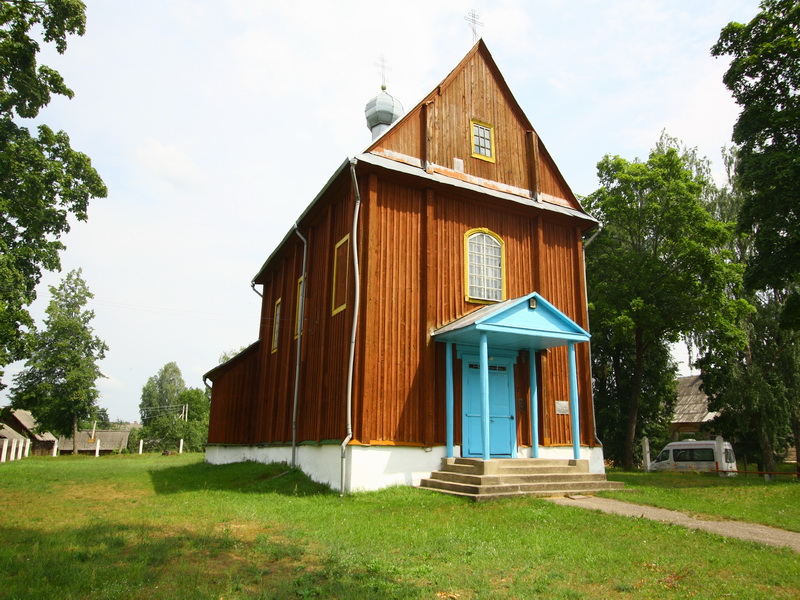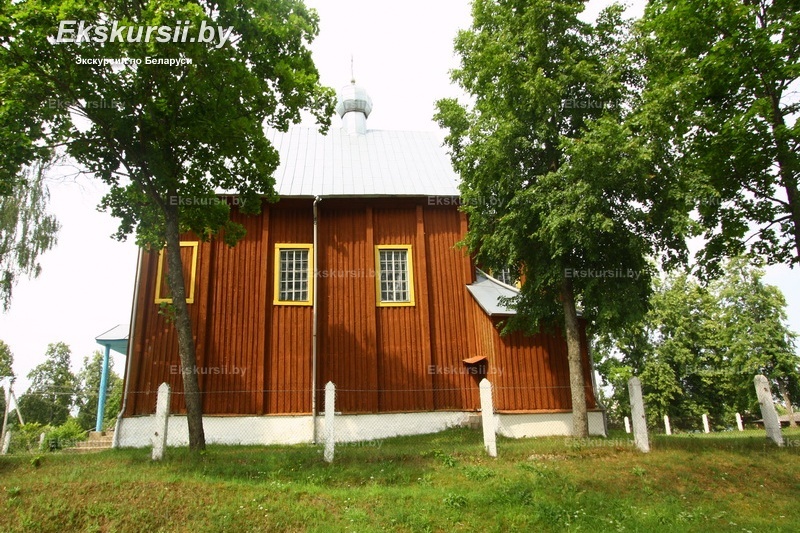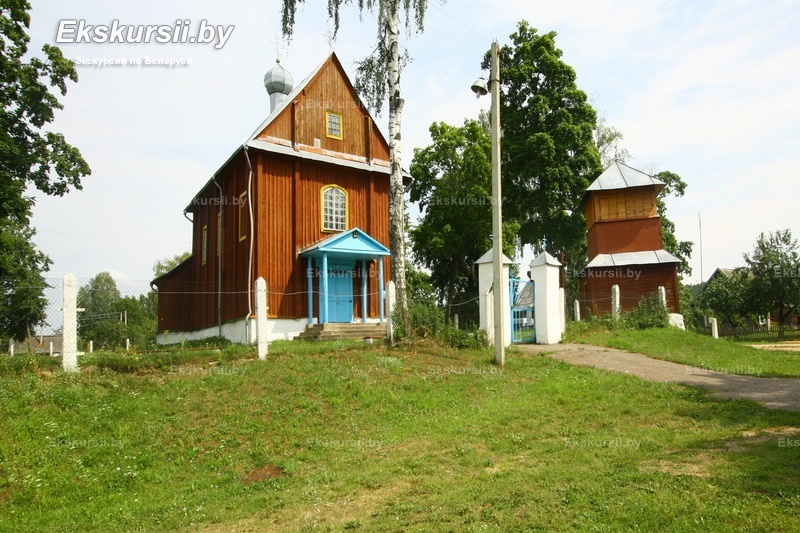History
The Holy Trinity Church in Leonpol is a site of national significance, built in 1774 with funds from Nikolai Lopatin. This wooden structure is truly unique: the church was erected without using nails, which were added only a century later during exterior paneling. For 240 years, the church has never been closed, retaining not only its original purpose but also a special spiritual atmosphere. Another nearby architectural treasure is the white Lopatin Palace in Baroque style, over 260 years old. At the forest’s edge stands a rare memorial pillar in Belarus, erected by the Sapieha family in honor of the Constitution of the Polish–Lithuanian Commonwealth of 1791.
Architecture
The Holy Trinity Church in Leonpol is an outstanding example of Belarusian vernacular architecture, notable not for grandeur, but for its humble and heartfelt simplicity. Its design is almost entirely devoid of decorative excess — instead, it emphasizes the harmony of form and natural materials. The only expressive detail is a small onion-shaped dome that gives the church its distinctive silhouette. Nearby rises a four-sided bell tower topped with a sloping tented roof — a fitting element of the architectural ensemble. This church is a perfect place for those who appreciate the natural beauty and spiritual aura conveyed through folk craftsmanship and cultural memory.
Excursions
You can visit this remarkable location as part of an individual excursion from Minsk to the Holy Trinity Church in Leonpol. During the trip, you’ll not only see the rare wooden church built without nails, but also stroll through the old estate, learn about the tragic and inspiring stories of its owners, visit the 1791 memorial column, and immerse yourself in the spirit of a bygone era. The excursion may also include a visit to the «Radzimaznaŭstva» Museum, founded with the participation of the poet Siarhei Paniznik. A special highlight is the museum’s branch — the house of Babka Yadvina — which preserves objects of rural life and rare audio recordings of folk songs. This journey offers a truly personal connection to the history and culture of the Belarusian countryside.


